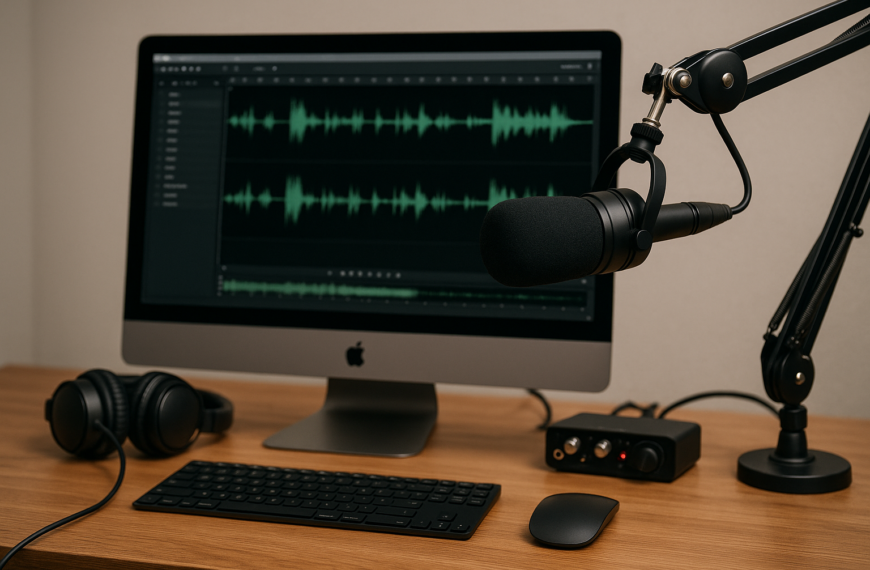Have you ever been frustrated trying to sync your modular synth with your DAW, only to feel like the technology just isn’t speaking the same language? You’re not alone. The need for DC coupled audio interface has skyrocketed.
But here’s the thing:
Not all audio interfaces are created equal.
Did you know that most standard audio interfaces can’t send control voltage (CV) signals? That’s where DC-coupled interfaces step in, bridging the gap between your digital workstation and analog gear.
In this guide, we’ll explore which one is the top DC coupled audio interface of 2025 and help you find the perfect match for your needs. Let’s dive in!
What is a DC-Coupled Audio Interface?
If you’ve ever wondered what makes DC-coupled audio interfaces such a big deal, let’s break it down. Most standard audio interfaces use AC coupling, which is great for typical audio signals but not so much for sending control voltages (CV). That’s where DC coupling comes into play.
So, what’s the difference?
AC-coupled interfaces block DC signals, which are essential for communicating with modular synthesizers, triggering hardware, or controlling analog gear.
On the other hand, DC-coupled interfaces allow you to send CV signals directly from your DAW to your hardware, opening up a world of creative possibilities.
Why is this important?
Imagine simply matching each wave and pulse while controlling a modular synth with your DAW. A DC-coupled interface makes that vision a reality. Clock signals, pitch shifts, and even real-time parameter modulation can all be produced. It’s similar to giving your studio setup a voice so that the analog and digital worlds may interact with ease.
DC-coupled interfaces are more important than ever in 2025 because modular synthesis and hybrid workflows are becoming more common. A DC-coupled interface is a crucial instrument for contemporary audio creation,
regardless of your goals: integrating hardware synths, experimenting with Eurorack configurations, or pushing the boundaries of sound design.

Top DC-Coupled Audio Interfaces in 2025
Now that we’ve covered what makes DC-coupled audio interfaces so important and what to look for, let’s dive into the top options you should consider in 2025. Here’s a rundown of the best choices available today.
(a) MOTU UltraLite-mk5
- Key Features: The MOTU UltraLite-mk5 offers an impressive 18×22 I/O setup and ultra-low latency, making it a solid choice for both studio and live use. It’s equipped with ESS Sabre32 Ultra DAC technology, ensuring crystal-clear audio conversion.
- Unique Selling Point: This interface is compact but powerful, offering pro-level features in a small package. Plus, its DC-coupled outputs make it perfect for syncing with modular synths and other analog gear.
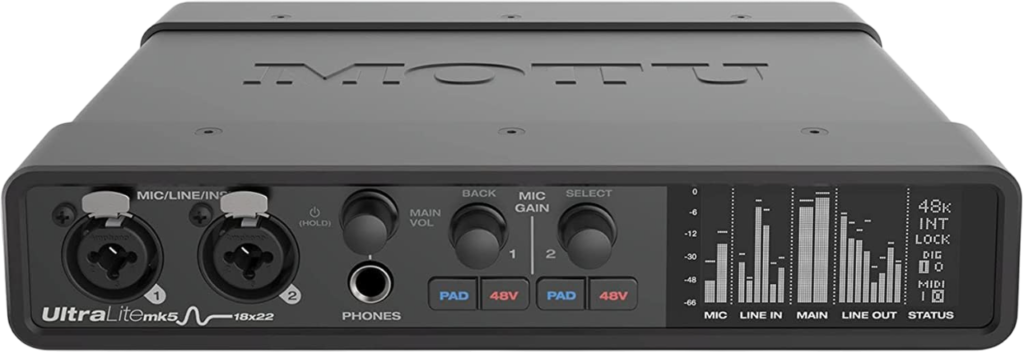
(b) PreSonus Studio 1824c
- Key Features: With 18×18 I/O and the included Studio One Artist DAW, the PreSonus Studio 1824c is a great all-in-one option for those looking to expand their setup.
- Unique Selling Point: Its DC-coupled outputs make it perfect for integrating modular synths into your setup, and the affordable price point adds great value for those looking for pro-quality without the hefty price tag.

(c) Universal Audio Apollo x8
- Key Features: The Apollo x8 features elite A/D and D/A conversion and onboard UAD-2 HEXA Core processing for running UAD plugins without using your CPU. It’s also equipped with Thunderbolt connectivity for low-latency performance.
- Unique Selling Point: This interface is the go-to for anyone looking for top-tier audio quality and the ability to run DSP-powered UAD plugins in real time, all while integrating seamlessly with modular synths thanks to DC-coupled outputs.

(d) Focusrite Scarlett 18i20 (4th Gen)
- Key Features: The Focusrite Scarlett 18i20 provides 18×20 I/O and features Focusrite’s signature preamps, known for their clarity and warmth. The updated 4th Gen model also comes with enhanced Air mode for added vocal clarity.
- Unique Selling Point: This interface is perfect for users who need a reliable, easy-to-use system that still packs a punch in terms of audio performance and flexibility—plus, it’s great for modular setups with its DC-coupled outputs.

(e) RME Fireface UCX II
- Key Features: The RME Fireface UCX II offers 40 channels of I/O, excellent SteadyClock FS technology for jitter-free audio, and full compatibility with both macOS and Windows systems.
- Unique Selling Point: This interface is a powerhouse for professionals, with incredible stability and low latency. The addition of DC-coupled outputs makes it an excellent choice for complex setups, including hybrid digital-analog systems.
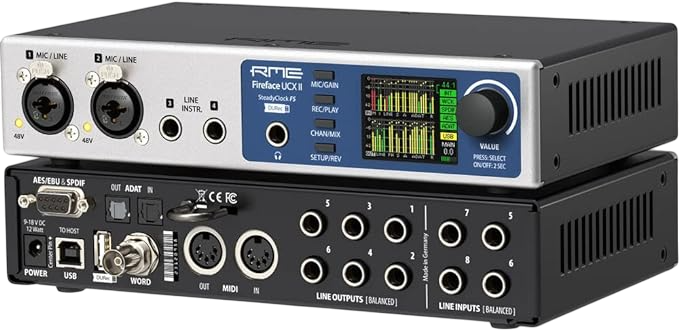
(f) Arturia AudioFuse 16Rig
- Key Features: The Arturia AudioFuse 16Rig is designed for the modern music maker, offering 16 analog inputs and outputs, as well as top-quality preamps for pristine audio capture.
- Unique Selling Point: This interface is highly regarded for its modular synth compatibility, providing DC-coupled outputs to ensure flawless control voltage (CV) signals for your gear. Plus, its sleek design and top-tier sound quality make it a standout.

(g) Apogee Symphony Desktop
- Key Features: With Apogee’s flagship AD/DA conversion and touchscreen control, the Symphony Desktop offers exceptional sound quality in a portable form factor.
- Unique Selling Point: The Symphony Desktop is perfect for producers looking for a high-end interface that also integrates well with modular synths thanks to its DC-coupled outputs. It delivers premium quality and ease of use.
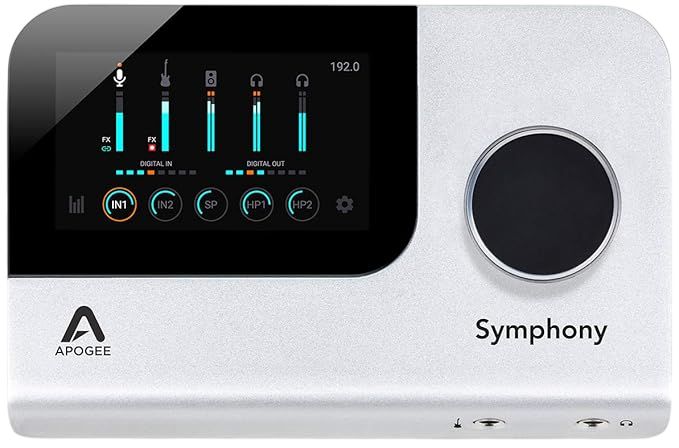
(h) Native Instruments Komplete Audio 6 Mk2
- Key Features: This affordable interface offers 6×6 I/O and is bundled with Native Instruments’ software suite, making it a great option for beginners and hobbyists.
- Unique Selling Point: While it’s budget-friendly, the Komplete Audio 6 Mk2 doesn’t skimp on features. It offers DC-coupled outputs for those just starting to integrate modular gear, along with solid audio performance for the price.
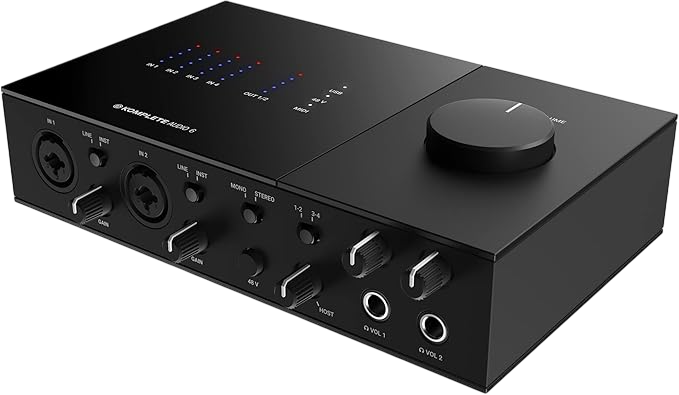
(i) MOTU 828es
- Key Features: The MOTU 828es features 28×32 I/O and a web-based DSP control interface for easy routing and monitoring. It also supports high-quality audio conversion and ultra-low latency.
- Unique Selling Point: The MOTU 828es stands out for its versatility and range of features, including DC-coupled outputs for syncing with modular synths and other hardware. It’s ideal for users who need a comprehensive, professional-grade solution.

(j) PreSonus Quantum 2626
- Key Features: The PreSonus Quantum 2626 offers 26×26 I/O, and with Thunderbolt 3 connectivity, it delivers incredibly low latency.
- Unique Selling Point: This interface is perfect for those with larger setups or more demanding workflows, offering the reliability and performance needed for seamless integration with modular gear, all while maintaining ultra-low latency thanks to its Thunderbolt 3 connection.

Comparing the Top DC-Coupled Audio Interfaces
Let’s make things easier by breaking down the key specs and features of these top models in a simple comparison table. This way, you can quickly identify which interface best fits your needs.
| Audio Interface | I/O | Unique Feature | DC-Coupled Outputs | Best For |
|---|---|---|---|---|
| MOTU UltraLite-mk5 | 18×22 | ESS Sabre32 Ultra DAC technology for clear audio. | Yes | Compact, portable setups and pro quality |
| PreSonus Studio 1824c | 18×18 | Studio One Artist DAW included, affordable. | Yes | Budget-friendly and beginner-friendly |
| Universal Audio Apollo x8 | 18×24 | Onboard UAD-2 HEXA Core processing for plugins. | Yes | High-end audio quality and plugins |
| Focusrite Scarlett 18i20 (4th Gen) | 18×20 | Enhanced Air mode for added clarity. | Yes | Versatile and reliable for all setups |
| RME Fireface UCX II | 40×40 | SteadyClock FS for jitter-free audio. | Yes | Professionals and complex workflows |
| Arturia AudioFuse 16Rig | 16×16 | Modular synth integration with pristine audio. | Yes | Modular synth enthusiasts |
| Apogee Symphony Desktop | 10×12 | Premium AD/DA conversion and touchscreen control. | Yes | High-quality audio in a portable form |
| Native Instruments Komplete Audio 6 Mk2 | 6×6 | Bundled software suite, great for beginners. | Yes | Budget-friendly modular synth integration |
| MOTU 828es | 28×32 | Web-based DSP control interface for easy routing. | Yes | Larger setups and professionals |
| PreSonus Quantum 2626 | 26×26 | Thunderbolt 3 connectivity for ultra-low latency. | Yes | High-performance, low-latency needs |
Conclusion: Which DC-Coupled Audio Interface is Right for You?
Choosing the right DC-coupled audio interface really comes down to your specific needs and how you plan to use it. Whether you’re a beginner just getting started with modular synths or a seasoned professional looking to integrate a complex hybrid setup, there’s an option for everyone.
Here’s a quick recap to help you make your decision:
- For Compact and Portable Setups: If you’re looking for a compact interface that doesn’t compromise on performance, the MOTU UltraLite-mk5 is a top contender with its sleek design and pro-level audio quality. It’s perfect if you need portability without sacrificing sound.
- For Budget-Friendly, Beginner-Friendly Options: The PreSonus Studio 1824c and Native Instruments Komplete Audio 6 Mk2 are both fantastic choices if you’re on a budget. They offer great value with DC-coupled outputs for modular synth integration, making them ideal for newcomers to the world of hardware and DAWs.
- For High-End, Pro-Quality Audio: The Universal Audio Apollo x8 and RME Fireface UCX II are both excellent choices if you demand the best in audio quality, low latency, and reliable performance. These are perfect for users working on complex studio setups and those who need professional-grade sound for every project.
- For Modular Synth Enthusiasts: If you’re diving into modular synths and want an interface designed for that purpose, the Arturia AudioFuse 16Rig stands out with its modular synth integration, while the PreSonus Quantum 2626 offers ultra-low latency and flexibility for larger setups.
- For Hybrid Digital-Analog Setups: If you’re combining digital and analog gear and need something that handles both seamlessly, the MOTU 828es is a powerhouse with plenty of I/O and DC-coupled outputs. It’s designed for professionals who need to manage more complex workflows.
Into Podcasting?
Podcasting is a different game, and without a precise blueprint, the game will get tougher midway. Grow your podcast from scratch with Zero Audience and learn about how successful podcasters cracked the code by winning our Free Guide with step by step Guidelines.
Get your complete podcast equipment setup by visiting Podcast Equipment Bundle. Don’t let the side projects kill your time. Get in touch with podcasting services and experts those will save you tons of time at Podcast Production Services.
With that being said, Let’s connect with all such free and paid tool/services you might need knowingly or unknowingly to fuel your growth. Here’s 21 BEST AI TOOLS AND PLATFORMS TO GROW YOUR PODCAST AND CONTENTS. There are some bonus tools in the end too to make your day to day life easier.
There are some affiliate links on this page that will redirect you directly to the original products and services. Also by buying through those links you will be supporting us. So thank you ^.^
Related Posts
Here’s a list of blog posts of various types of audio interfaces that you can consider as alternative options:
- USB Audio Interfaces
- Telephone Audio Interfaces
- 4 XLR Input Audio Interface
- Audio Interface for Mac
- DC-Coupled Audio Interfaces
- PCIe Audio Interfaces
- Audio Interface Under $200
- Fairlight Audio Interface
- 12-Input Audio Interface
- Audio Interfaces with Bluetooth
